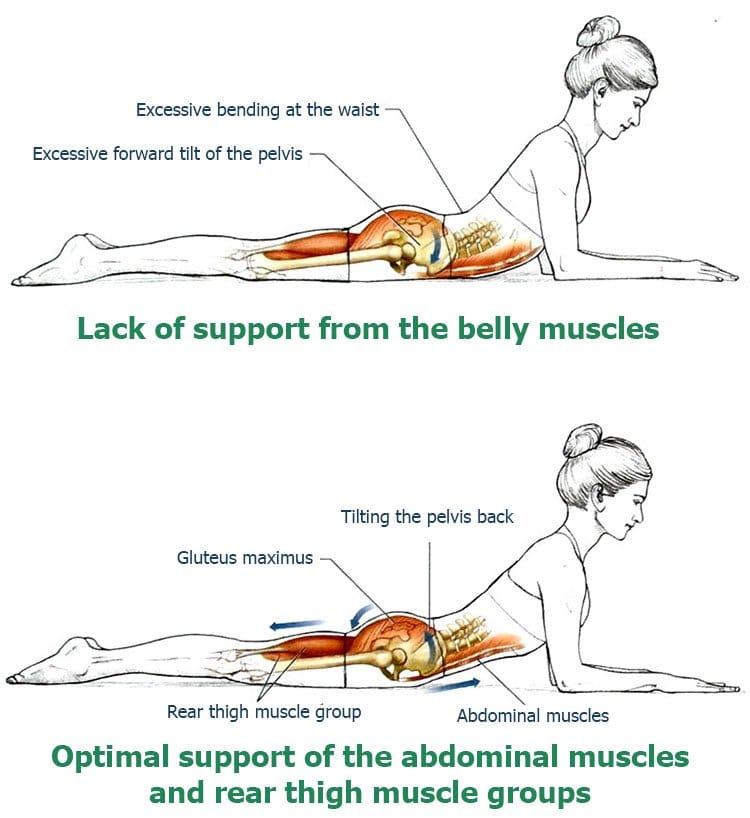The series so far:
- Exercise #1: Cat-Cow
- Exercise #2: Back Extension (you are here)
- Exercise #3: Back Stretching
- Exercise #4: Heel Kick
- Exercise #5: Double Impact
- Exercise #6: Swimming
- Exercise #7: Stomach Rolls
- Exercise #8: Diving Swan
Back extension is a widely used exercise to strengthen the muscles on your back and protect your spine from injury. Physiotherapists apply this exercise not only in sports training, but also in medicine. Back extensions, when practiced regularly, help you get rid of round back and discomfort in the spine and give you an optimal posture. Office workers and anybody who tends to sit a lot will find this exercise very helpful in alleviating problems and symptoms associated with prolonged sitting.

Initial position. Lie on your stomach and put your forehead on the exercise mat. Place your arms at your sides and press your palms on the thighs. Straighten your elbows. Put your legs together, drawing out the toes slightly.
- Exale. Gradually lift the head, chest and upper abdomen from the mat, keeping the feet and hands in the initial position;
- Inhale. Slowly lower the trunk and head to the initial position. Repeat the exercise 10 times.
Make Sure You:
- Provide some support for the spine during the extension of the back by tensing the abdominal muscles and not releasing your feet from the mat;
- Make your body rise gradually, vertebra by vertebra, starting at the cervical spine. Pay attention to the movement of the muscles around the spine and keep your head aligned with the body;
- Place your arms close to your sides so you can also use the adductor muscles, particularly the latissimus dorsi and pectoralis major. Activation of the latissimus dorsi muscle is needed as it plays a key role in stabilizing the torso.
- Move your body gradually back to the mat, from the lower spine to the top, using back extensors to control the lowering. The abdominal muscles at this time provide support for the spine.
Additional Notes
Abdominal muscles play a vital role in providing support to the spine with its extension. Because the position of the lumbar spine and the chest, when doing this and similar exercises there is a tendency to sag/drop the waist. Usually the pelvis tilts forward, as shown on the upper illustration here:
By straining the muscles of the abdomen and pulling them up, we tilt the pelvis back into position. Make sure to firmly press the pelvis to the mat and pull your stomach and abdominal muscles to direct the effort toward your chest, as shown on the illustration just above. This will not allow the pelvis to tilt forward and it will remove unnecessary tension in the lumbar region. The ability to use your abdominal muscles to stabilize the lumbar region is necessary to optimally perform this and more complex exercises associated with back extension.
Source: SportWiki.to






